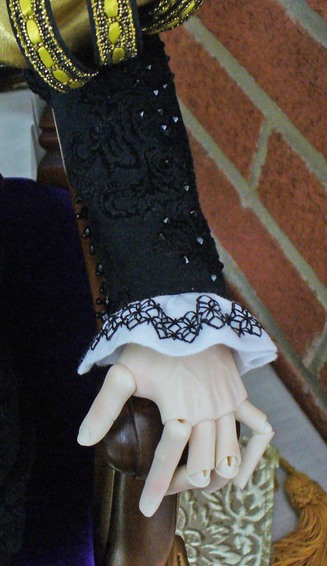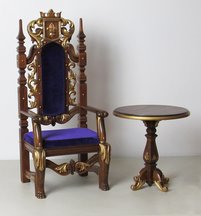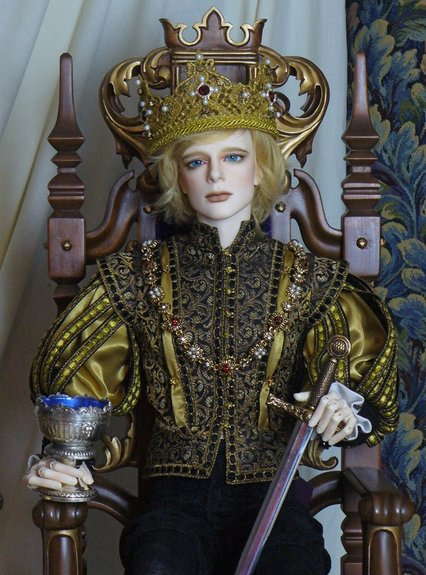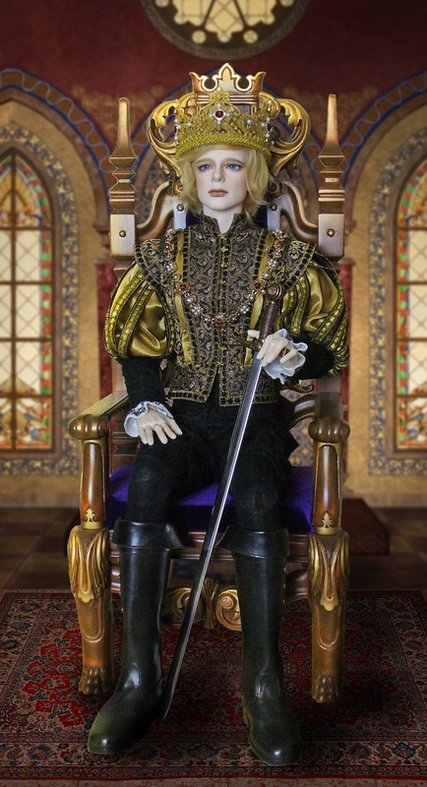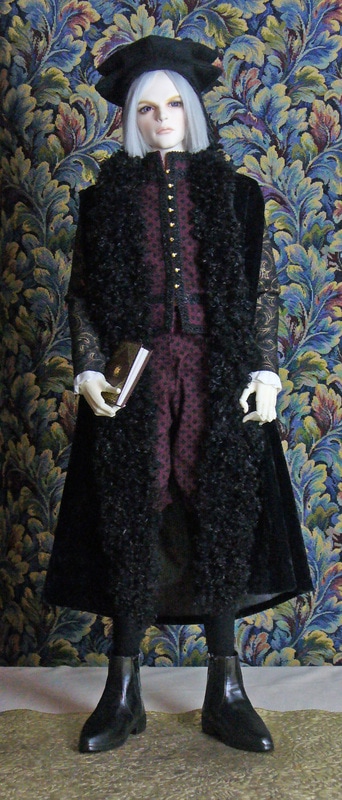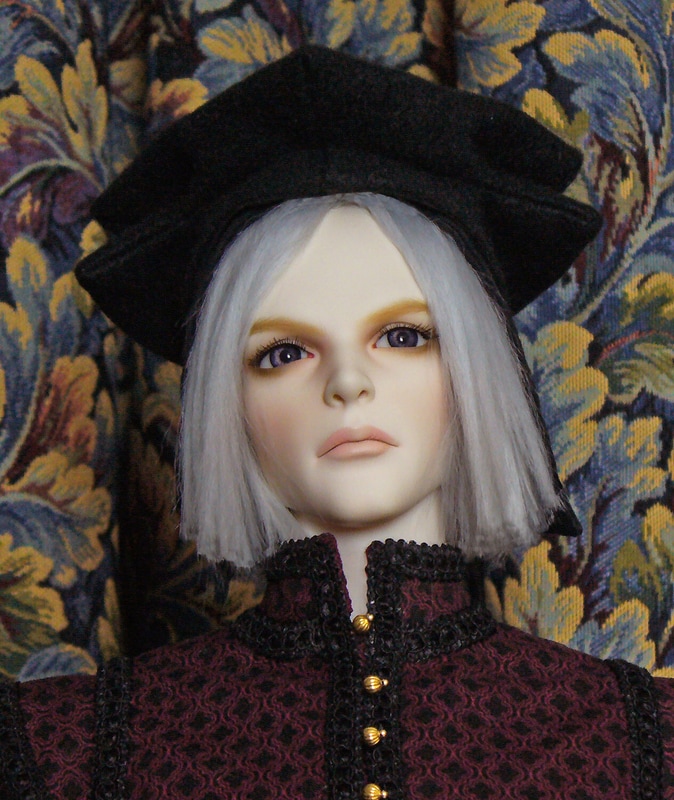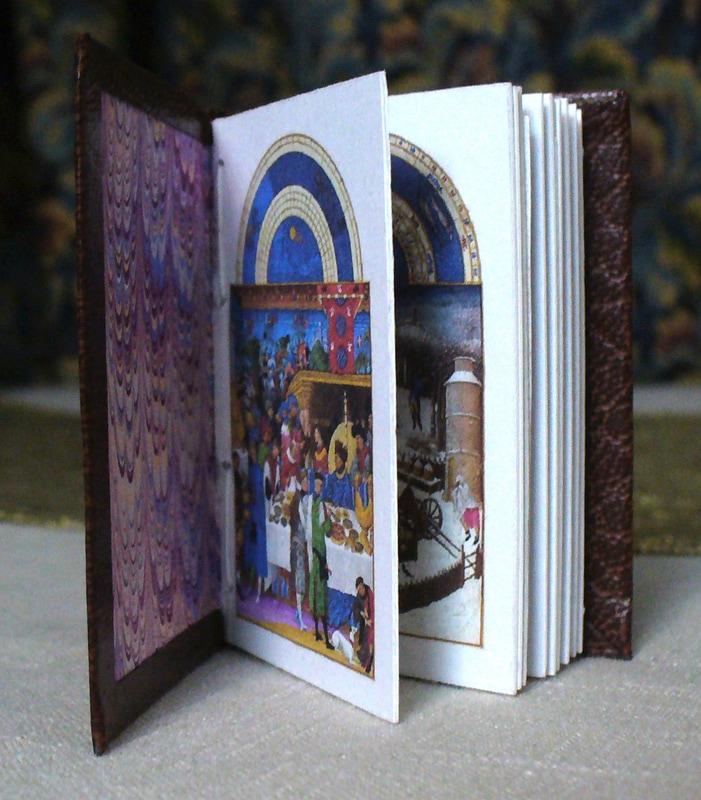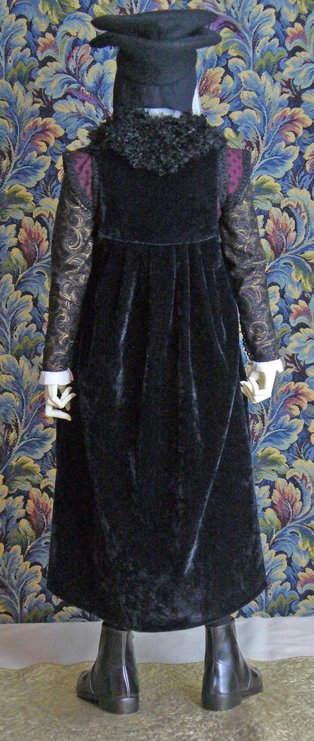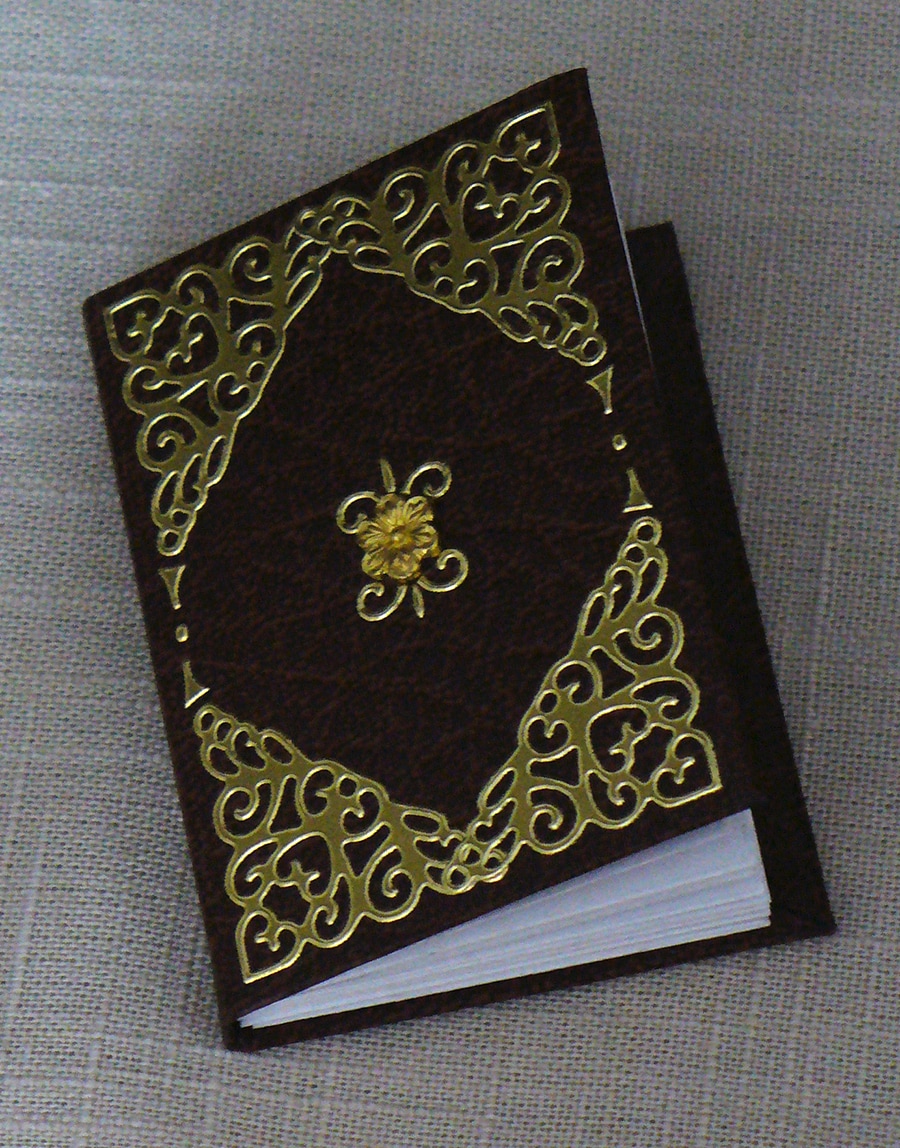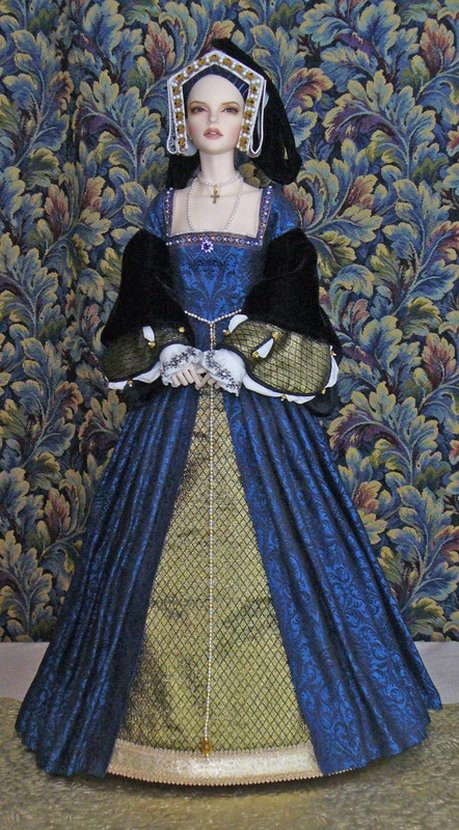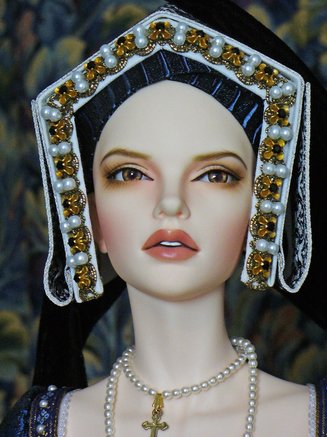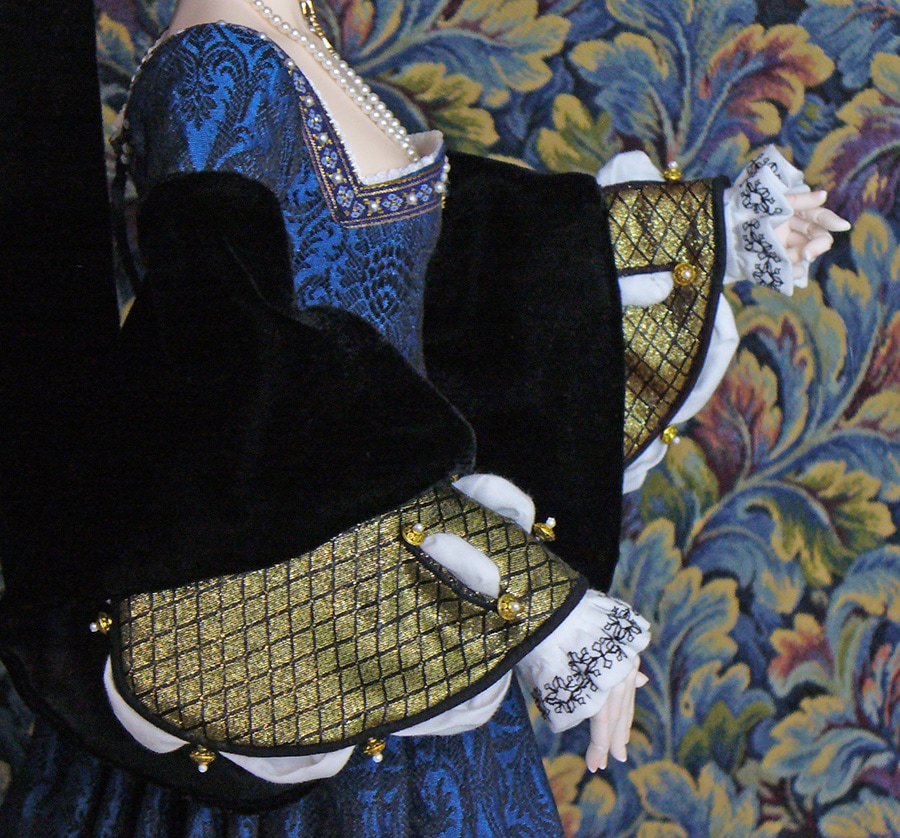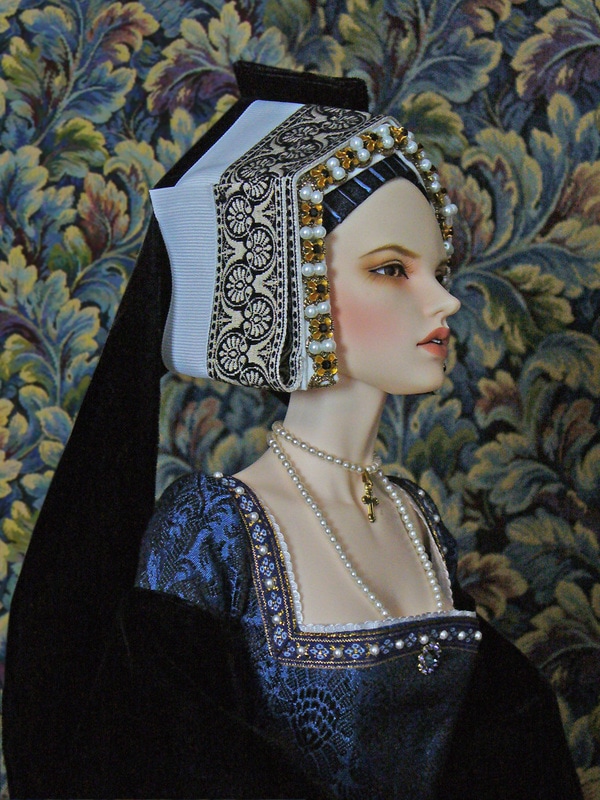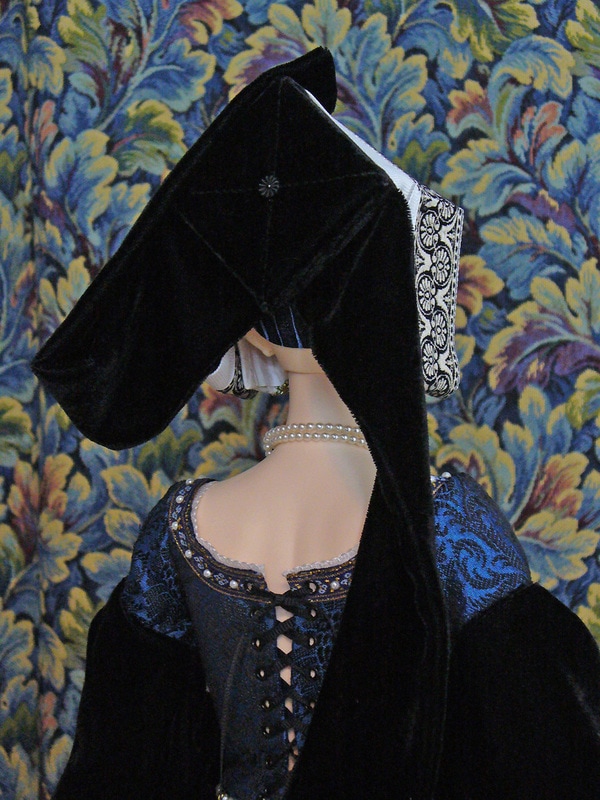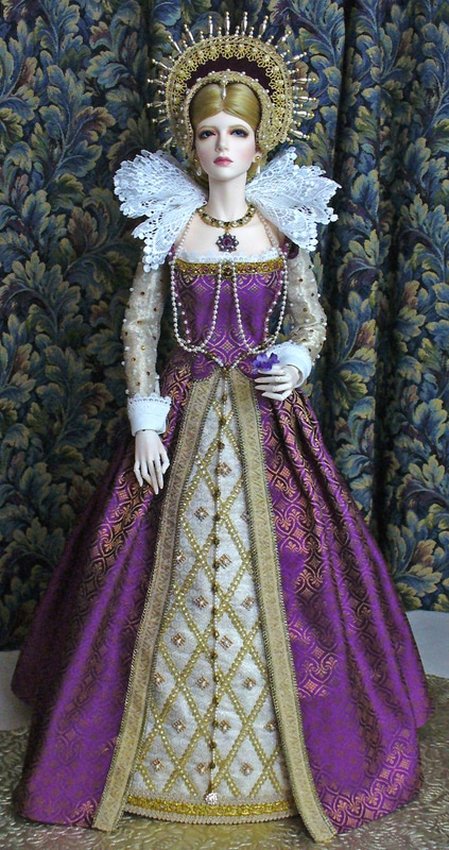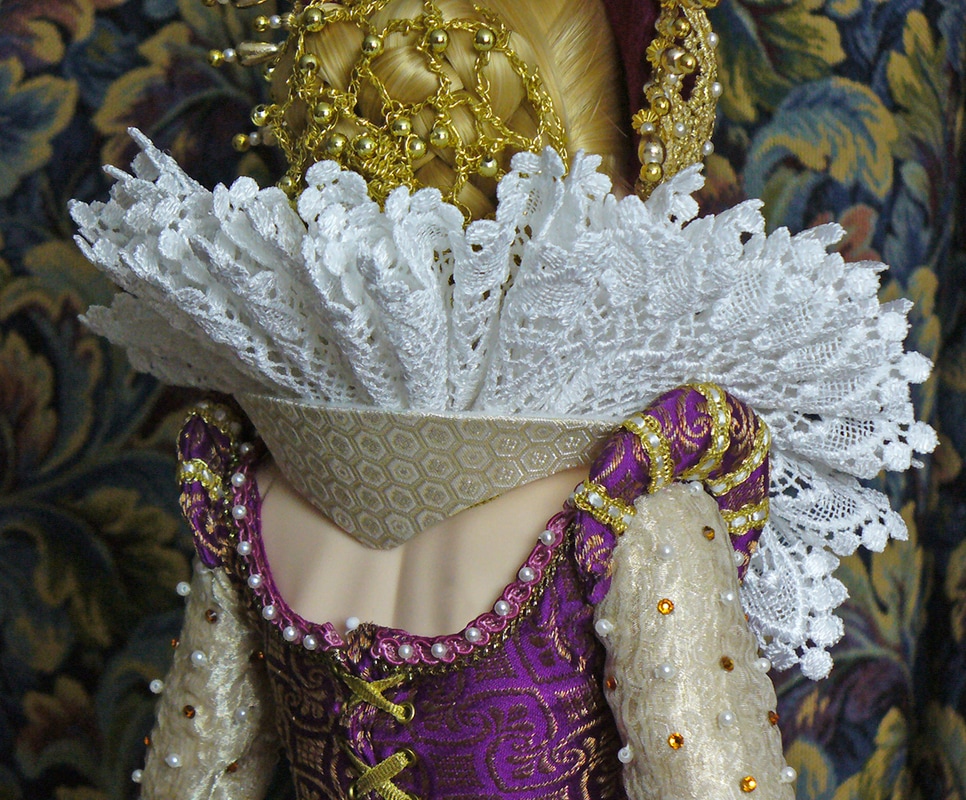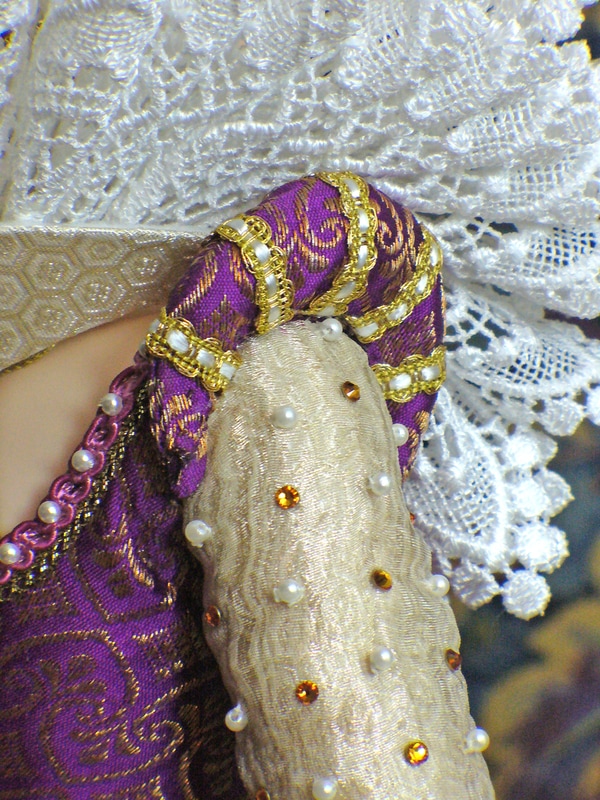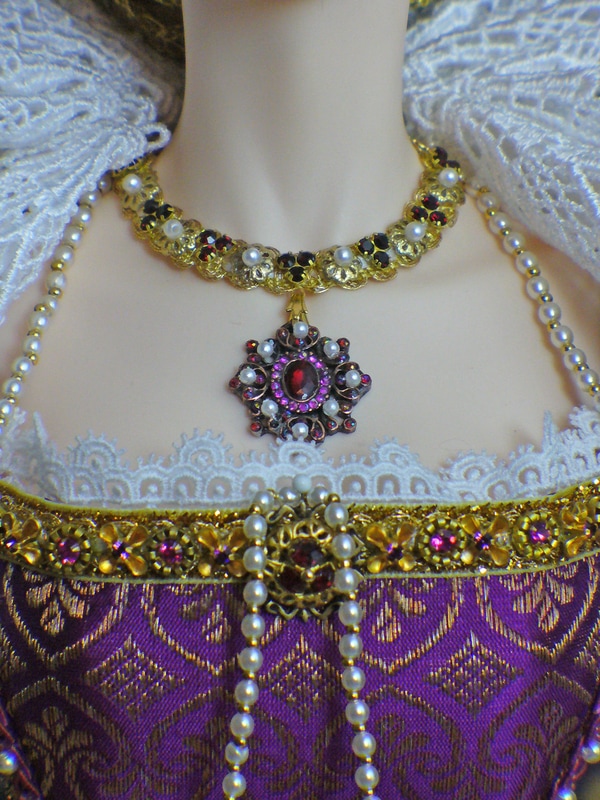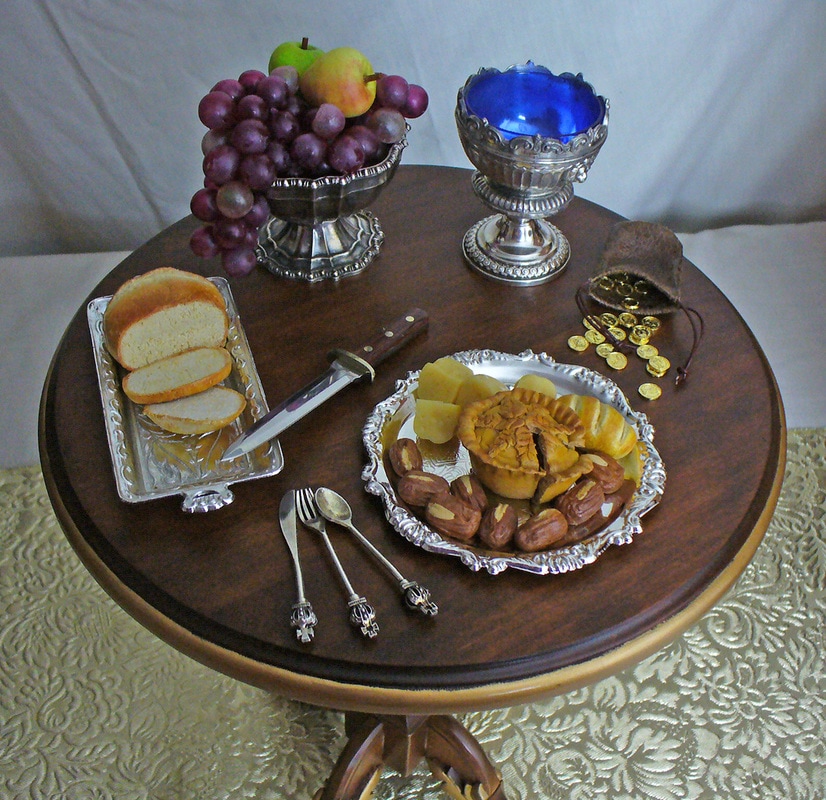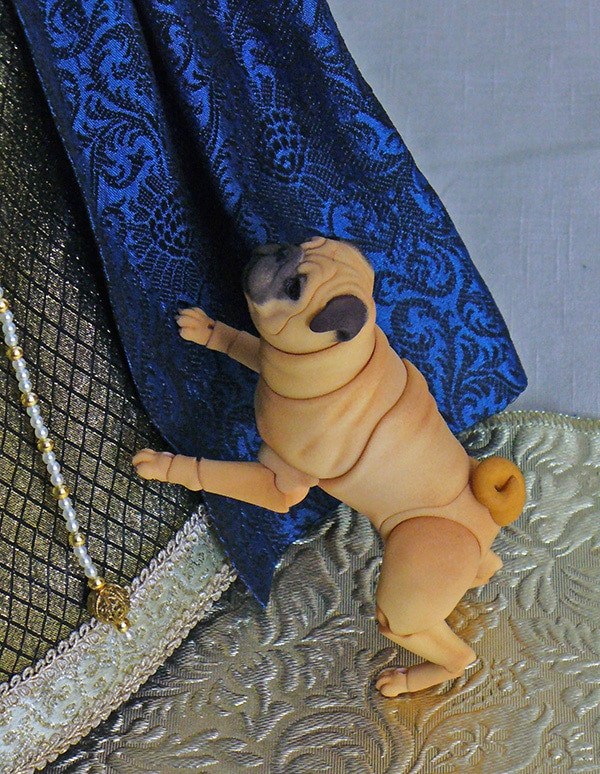Renaissance Doll Project
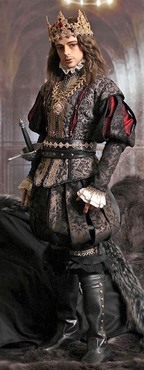 Iplehouse Luo in their Camelot King costume.
Iplehouse Luo in their Camelot King costume.
I wanted to make an Elizabethan gown for a doll for the Small Fantasies show but ran out of time. Then Iplehouse came out with a Camelot king outfit which I took one look at and decided I could do just as well. Of course this necessitated purchasing the doll Iplehouse had modeled the costume on, the EID Luo sculpt. Not a hardship since it resembled a young Brad Pitt.
I then added more dolls to the project, EID Tedros as the scholar, SID Stella as the Tudor lady and SID Harace as the Elizabethan queen.
The four outfits and their accessories took me 300 hours over two and a half months. At one time or another in my SCA career I’d made all of these outfits full size and wanted to make the doll size ones as accurately as I could. However instead of trying to downsize my existing adult patterns, I scanned the miniature pattern pieces from the instruction sheets of a couple of more-or-less accurate historical commercial patterns, upsized them in the computer and used them as the basis for the female costumes. Though it took a bit of tweaking, it saved a lot of time. I keep thinking my BJD’s are proportioned like real humans and they’re absolutely not, so parts of the costume have to be adjusted in weird ways.
I then added more dolls to the project, EID Tedros as the scholar, SID Stella as the Tudor lady and SID Harace as the Elizabethan queen.
The four outfits and their accessories took me 300 hours over two and a half months. At one time or another in my SCA career I’d made all of these outfits full size and wanted to make the doll size ones as accurately as I could. However instead of trying to downsize my existing adult patterns, I scanned the miniature pattern pieces from the instruction sheets of a couple of more-or-less accurate historical commercial patterns, upsized them in the computer and used them as the basis for the female costumes. Though it took a bit of tweaking, it saved a lot of time. I keep thinking my BJD’s are proportioned like real humans and they’re absolutely not, so parts of the costume have to be adjusted in weird ways.
The Tudor King
The Scholar
|
The scholar wears a similar outfit as the king, but in plainer fabric and with simpler trimmings. He also wears a velvet robe with a fur collar and a wool hat over a coif. This scholar's cap eventually became the graduation mortarboard.
The scholar carries a book of hours, a devotional medieval book of prayers, text and colorful illuminations. My tiny version includes the twelve months from the Très Riches Heures du Duc de Berry, marbled end papers and a cover decorated in filigree gilt motifs.
|
The Tudor LADY
|
This costume is based on the Holbein portrait of Jane Seymour, Henry VIII’s third wife, so 1530’s. The bodice and skirt are separate pieces. A lady would have worn a chemise or smock beneath her gown and I indicated this with a bit of white trim around the square neckline. The elaborate sleeves consist of black velvet bell sleeves on top and enormous flat false sleeves beneath. The blackwork cuffs of her smock show at the wrists. Her skirt is arranged over a boned farthingale or hoop skirt and is split in front to display the forefront of the underskirt.
The gable hood was one of the first period headpieces I made when I started historical costuming many years ago. This one is much more authentic than that first attempt. The side lappets which hung down in earlier periods are now pinned up, as is one black velvet veil in back. The front features a pearled and jeweled billament. The head wrap, sometimes referred to as a turban, created a foundation on which to position the unwieldy gable and was nearly always a striped silk. I used fabric from a striped tie I found at a thrift shop. |
The Elizabethan Lady
|
I'd made both full size and doll size Elizabethan gowns before so wanted to change this one up a little. Instead of pleated ruffs, I made a standing ruff to frame the doll's face, and turned back cuffs edged in lace.
The brocade silk of the bodice and overskirt is also from India. The sleeves are pearl trimmed vintage curtain sheers to which I added amber rhinestones. The frontspiece of the underskirt is highly decorated with findings and trim. Like the Tudor lady, the Elizabethan lady wears a pearl girdle or belt attached to the edge of her bodice and which drops down the front of her skirt. Pearls were the favored embellishment. So many thousands were used, it is my opinion that many were in fact Venice pearls, or glass beads. The headpiece is the English version of a French hood. Elizabeth I often wore this style. |
|
The standing ruff is supported by a piccadill or supportasse. These could be made of wire or pasteboard and covered with linen or silk. The English hood or diadem resembled a sunburst with its spikes of beads and pearls.
Details of the gown back, frontspiece, girdle, shoulder rolls, bodice trimming and tiny carcanet with a drop pendant. The miniature findings on all these costumes came from various Etsy stores.
|
The Other Bits
|
Ladies very often employed lap dogs for warmth as well as companionship. The pug is a 3-D printed doll from Elleo Dolls.
I combined a candlestick base and salt cellar for the goblet. The rest of miniature bits were antique shop and Etsy finds. The food items (except the grapes) were made by Katie Baker. |


